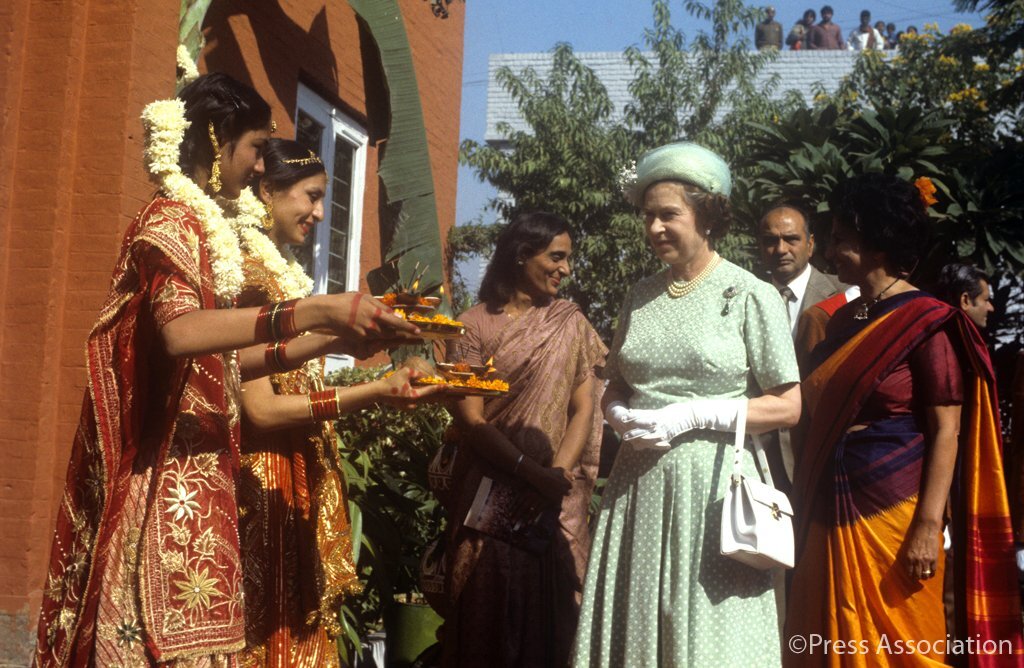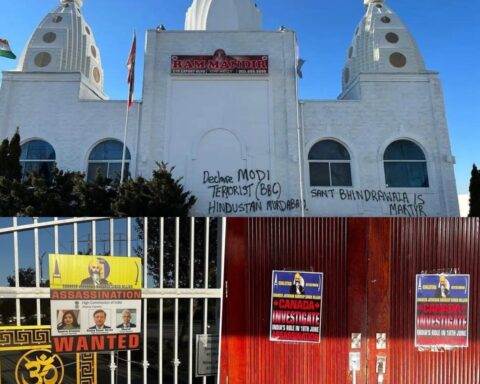It was 1961 when Queen Elizabeth and Prince Philip, the Duke of Edinburgh, made their first visit to Madras, India now called Chennai. Chosen groups of schoolgirls in the city went through arduous practice for a week in the heat and dust for a parade and mass drill which the Queen would witness in a stadium readied for the occasion. Hours in the sun did not matter then to the girls who felt privileged to be chosen to perform before the Queen. Physical fitness teachers of various schools had worked out a parade, a show of gymnastics and drill which the girls were put through heartlessly while broiling in the sun. But being chosen, meant they would get to see the Queen at close quarters and that was all that mattered to them.
I was not one of those school girls.
I was not one of the lucky ones selected for the parade. So I waited patiently and eagerly along with other friends and my parents for the Queen along the roadside. And my patience paid off. Still today I have a rose petal preserved between the pages of a tattered old diary that fell at my feet which I believed the Queen had thrown to me.
Some enterprising business-minded townsfolk made a quick penny by bringing in sofas and chairs from their homes to the pavements and sides of the roads. Those who wanted to be seated in front could buy their prime seats and wait until the Queen came into sight, when they would stand up and be caught by the cameras waving to her.
I remember my father wanting all in the family to see the Queen. Knowing the importance of the occasion he saw to it and positioned us early in strategic places to have a good sighting of her. Those were my pavada (skirt) and blouse years, and I was not too tall so I was allowed to stand in the front row. My aunt, called Elizabeth like the Queen, was pregnant, and she was crestfallen because her husband would not let her get jostled by the crowds. But my father had promised to give her a good look at the Queen, which he executed marvellously. He carried a folding chair in his car and placed it on the pavement. The people on the spot, noticing my aunt’s voluminous stomach, let her stand on the chair, some of them concerned enough to see that she was not toppled or pushed from her standing position when others pushed forward. My father wanted me to stand by her as a guard. I at first refused to do that, but he would not take no for an answer. So I stood with a long face, holding my aunt and her fluttering sari in position.
When the Queen’s motorcade drove in from Meenampakkam airport on to Cathedral Road people in hordes gathered on both sides of the road to wave and greet her and have a glimpse of royalty. She was dressed in pale powdery blue, a blue overcoat under which was a blue dress with an accompanying blue hat. She was standing in an open car with security guards.
Prince Philip followed in another car behind her, and occasionally when the car stopped for her to be greeted by a dignitary, especially when they reached the stadium, he would walk up and say a word or two to her, pat her gloved hands, then get back to his own perch. Some of us girls thought maybe he wanted to kiss the Queen. The English as we knew them did not hold back in public display of affection. One smart thing amongst us said he would only be allowed to kiss her hand.
The crowds craned their necks to see the Queen. Some held garlands just in case they could approach the vehicle as she passed. Such a reception had not been accorded in my memory to any visiting dignitary.
I believe the Queen must have noticed my pregnant aunt on a chair as she stood tall and a head higher than the rest, and my crestfallen face beside her, so she threw a red rose at us. I have never been so excited as when it landed like a spray of rose petals on us, one of which remains pressed within the pages of an old diary.
We waved and screamed, and the motorcade passed on. But the petal remains.
Gita Abraham is a journalist of 45-year standing and has worked in national dallies and magazines in New Delhi including Hindustan Times and India Today. For 15 years she was the Feature Editor of The City TAB in Bangalore. She was also a Professor of Journalism, at the Asian College of Journalism in Chennai. Treading the thin line between fact and fiction, Gita has launched her debut novel “Daughter of the Blue Hills” early this year. She and her husband are snowbirds shuffling between Chennai and Ottawa. She has two daughters and two frisky grandsons who inhabit her world.





